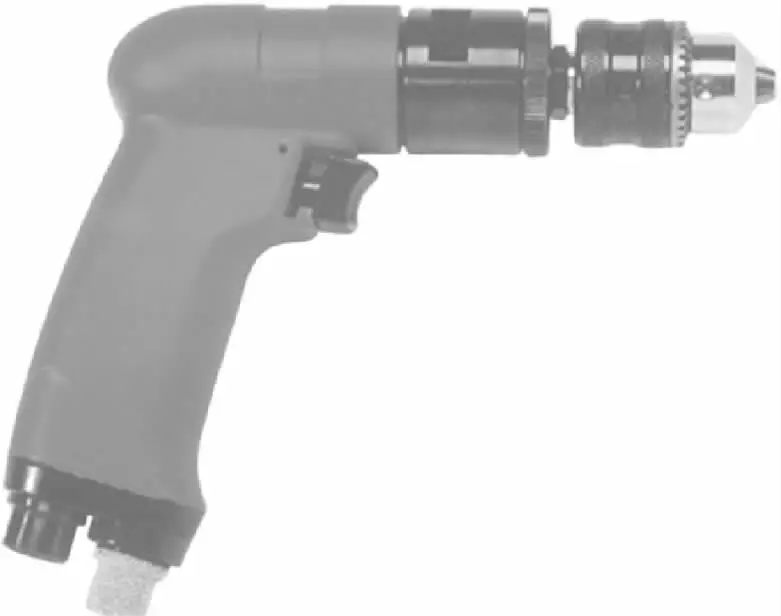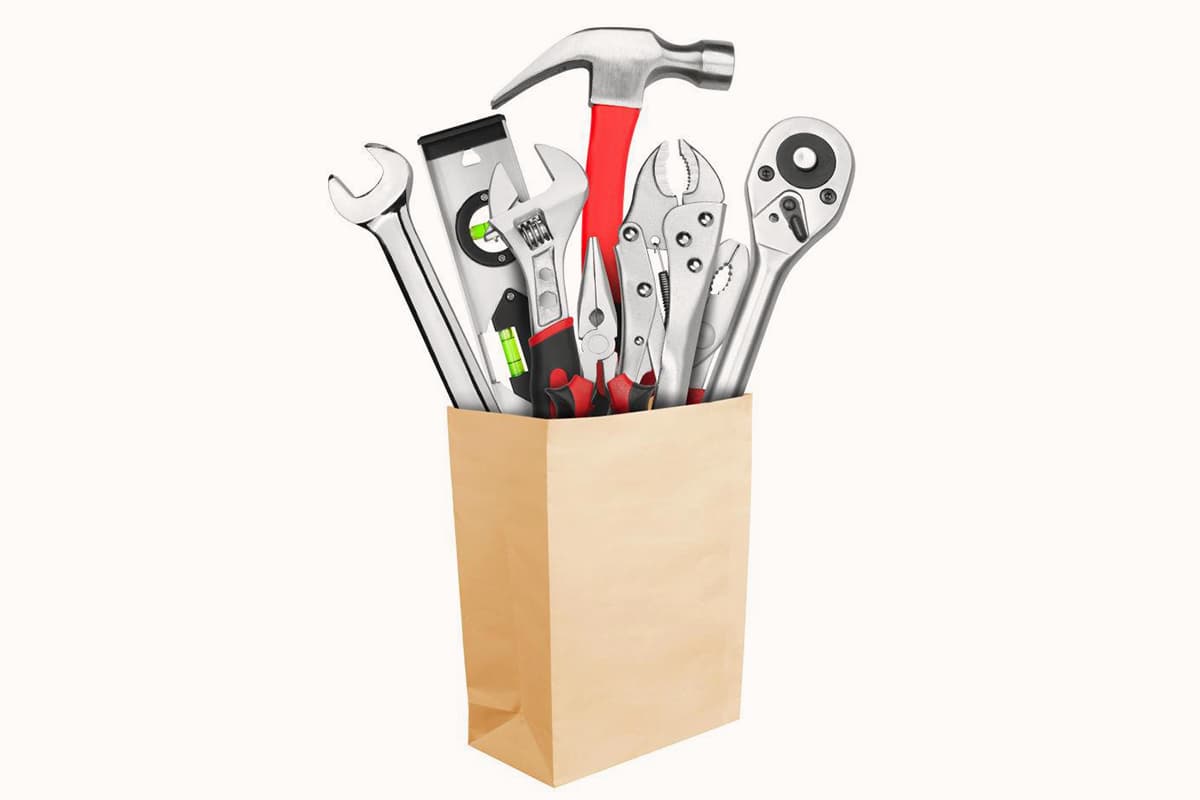I. Common Hand Tools
1. Pliers
(1) Wire Pliers
Wire pliers, also known as side cutting pliers or diagonal pliers, are used for holding or bending thin, cylindrical metal parts and cutting metal wires. Their cutting edges can also be used to cut thin metal wires. The handles of wire pliers come in two types: with a plastic cover (see figure 1a) and with a surface coated in black chrome (see figure 1b), available in total lengths of 160mm, 180mm, and 200mm.

a) Handle with plastic cover
b) Handle surface coated in black chrome
(2) Flat Nose Pliers
Flat nose pliers are a type of hand tool used for holding, securing workpieces, or twisting, bending, and cutting metal wires, as shown in figure 2. In repair work, they are used for disassembling and assembling pins, springs, etc., and are commonly used tools in metal component assembly and telecommunications engineering.
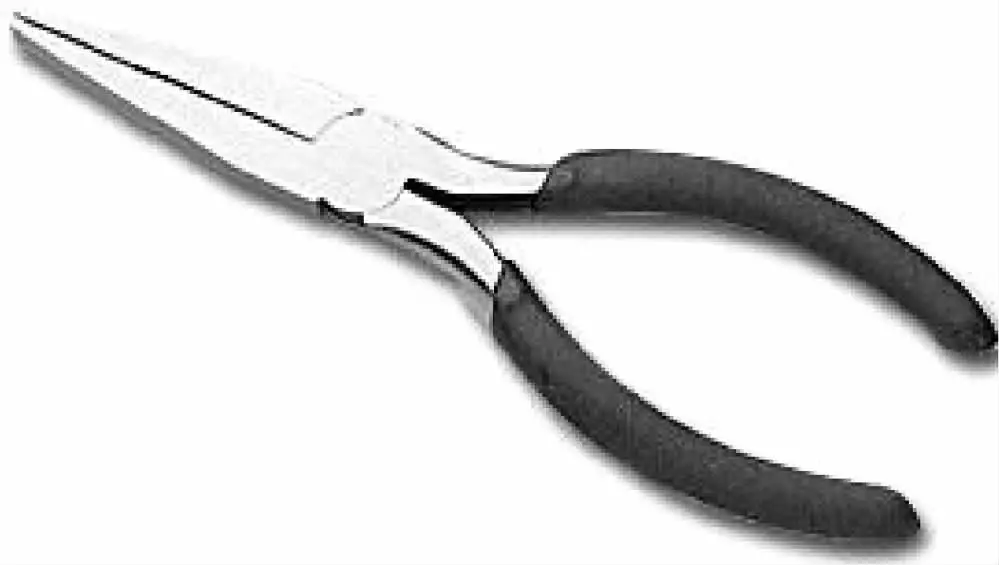
(3) Round Nose Pliers
As shown in Figure 3, the round-nose pliers have a conical head, used for bending metal sheets and wires into circular shapes. It is a commonly used tool in general telecommunications engineering and also one of the essential tools for making low-end jewelry.
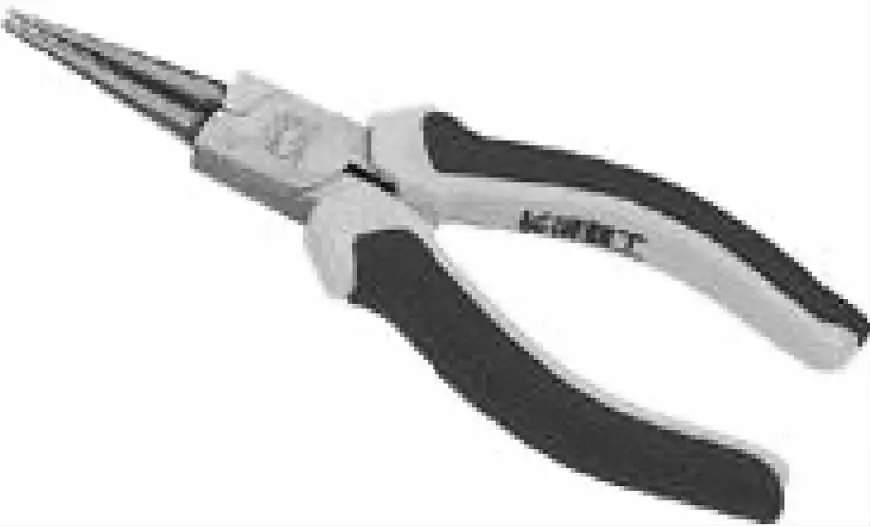
(4) Needle-nose pliers
As shown in Figure 4, the needle-nose pliers are covered with an insulating sleeve rated for 500V on the handle, making it a commonly used type of pliers.
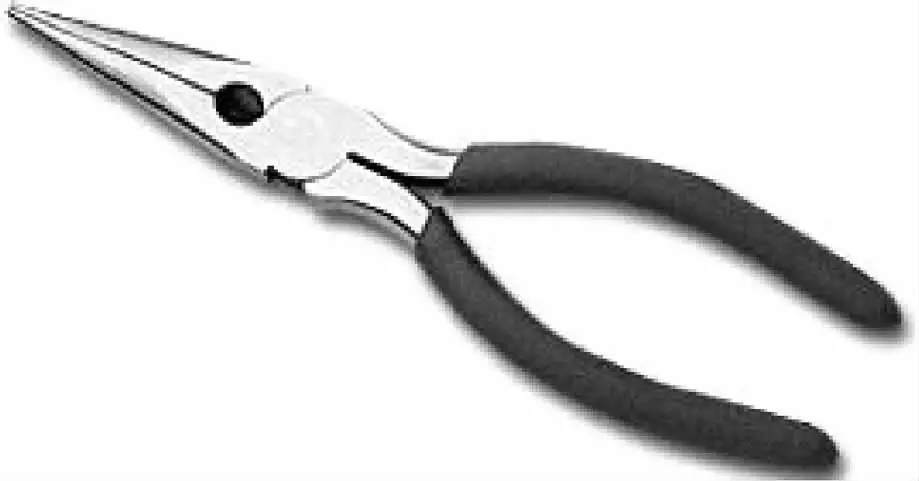
Mainly used for cutting thinner single-strand and multi-strand wires, as well as for bending loops in single-strand conductors, stripping plastic insulation, etc. It can operate in relatively narrow workspaces. Those without cutting edges can only pinch, while those with cutting edges can cut small parts. It is one of the commonly used tools for assembly and repair work in electrical engineering, instrumentation, and telecommunications equipment.
(5) Locking pliers
As shown in Figure 5, locking pliers are used to clamp parts for riveting, welding, grinding, and other processing. The feature is that the jaws can lock and generate a great clamping force, preventing the clamped parts from loosening. Moreover, the jaws have multiple adjustment positions for clamping parts of different diameters. The length is 220mm, and the maximum opening of the jaws is 50mm.
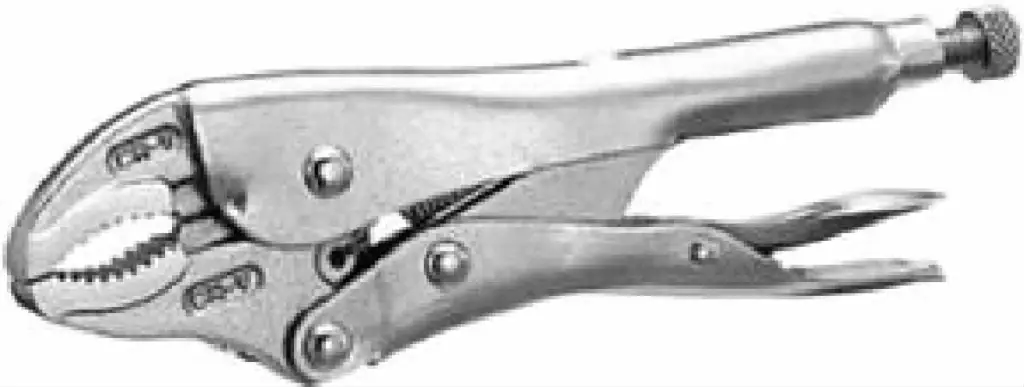
(6) Duckbill pliers
As shown in Figure 6, duckbill pliers are similar to flat-nose pliers, but their jaw parts are usually made with serrations, generally not damaging the surface of the clamped parts, and are often used in textile factories for repairing steel reeds. Lengths include 125mm, 140mm, 160mm, 180mm, and 200mm.

2. Wrench
(1) Adjustable wrench
Also known as a crescent wrench, as shown in Figure 7, it is a tool for tightening or loosening hexagonal or nut screws with angles. Common sizes are 200mm, 250mm, and 300mm, and the appropriate size should be selected according to the size of the nut.
(2) Fixed wrench
Also known as an open-end wrench, available in single and double-ended versions, as shown in Figure 8. One or both ends have a fixed size opening that matches the size of the screw head or nut, and they are made in a set according to standard sizes. A fixed wrench can only turn two adjacent sizes of hex or square bolts or nuts, having a smaller range of use compared to an adjustable wrench. It comes in sizes from M5 to M38.

(3) Box-end wrench
As shown in Figure 9, it has working ends with six or twelve-point sockets at both ends, suitable for situations where the workspace is too small to use a slightly larger wrench. It comes in sizes from M5 to M38.

(4) Combination wrench
As shown in Figure 10, one end is the same as a single-ended fixed wrench, and the other end is the same as a box-end wrench, turning bolts or nuts of the same size at both ends. It comes in sizes from M5 to M36.

(5) Hex key
Also known as an Allen wrench, as shown in Figure 11. It applies torque to the nut, greatly reducing the user’s effort. Lengths range from 50 to 355mm.
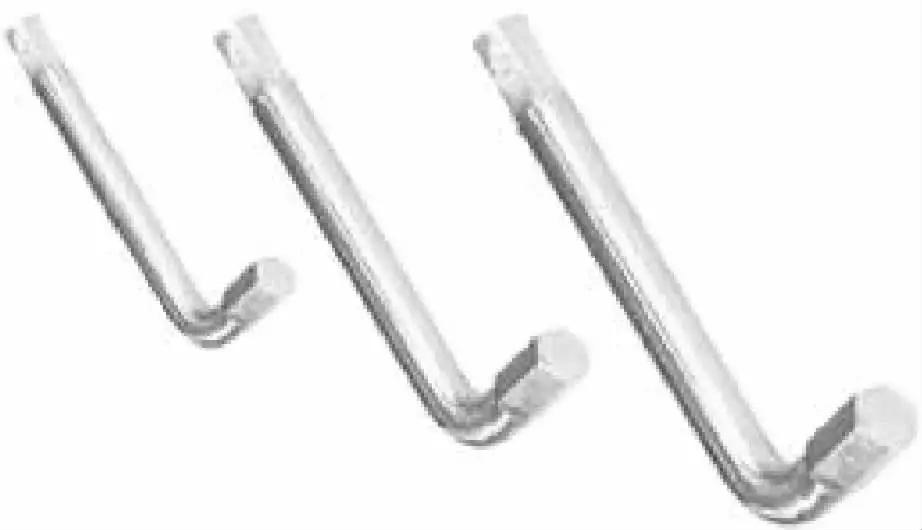
(6) Pipe wrench
As shown in Figure 12. Its structural feature is that the fixed jaw is made with a flat jaw with fine teeth, and one end of the movable jaw is made with a flat jaw, and the other end with a concave jaw with fine teeth. When the worm gear is pressed down, the movable jaw can be quickly removed, and the jaw position can be changed.

If the flat mouth of the active pliers is used, it can be used as an adjustable wrench; using the concave pliers mouth, it can be used as a pipe wrench. There are four lengths: 200mm, 250mm, 300mm, and 375mm.
(7) Quick Pipe Wrench
The quick pipe wrench, as shown in Figure 13, is used for tightening or disassembling small metal and other cylindrical parts, and can also be used as a wrench. It is a common tool for pipeline installation and maintenance work. There are three lengths: 200mm, 250mm, and 300mm.
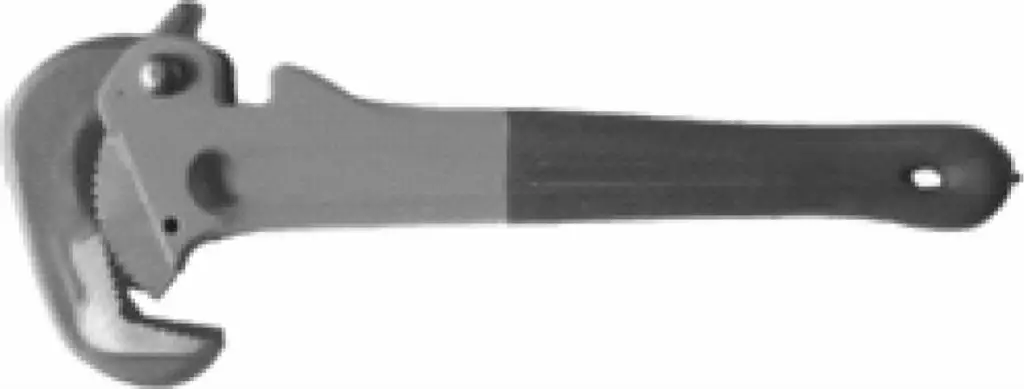
(8) Ratchet Wrench
The ratchet wrench, as shown in Figure 14, is used for installing and removing bolts, nuts, etc., especially suitable for situations with very limited rotational space. The corresponding opposite side size specifications are 5.5mm×7mm, 8mm×10mm, 12mm×14mm, 17mm×19mm, 22mm×24mm.

(9) Torque Wrench
The torque wrench, as shown in Figure 15, is used with a socket to tighten hex head bolts, nuts, and can display the torque value when tightening. There are four specifications for the square drive side length: 6.3mm, 12.5mm, 20mm, 25mm.

(10) Power Wrench
The power wrench, as shown in Figure 16, is used in conjunction with a torque wrench, ratchet wrench, or socket wrench to tighten or remove bolts, nuts. The output end square hole side length is uniformly 12.5mm, with total lengths of 25mm, 30mm, 35mm, 40mm, 50mm, 55mm, and 60mm in seven specifications.
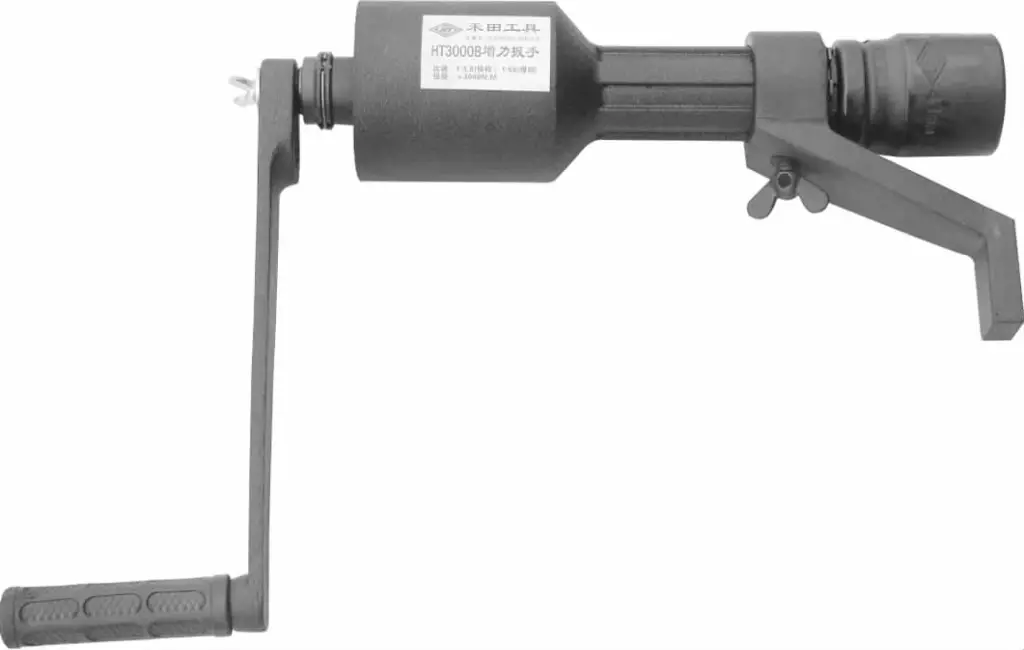
3. Screw Tools
(1) Spiral Ratchet Screw Tool
The spiral ratchet screw tool, suitable for mass production in screw installation and removal, as shown in Figure 17. Its main feature is that it changes the wrist twisting motion of rotating the ordinary screw tool to the arm’s back-and-forth pushing, reducing labor intensity and improving productivity.
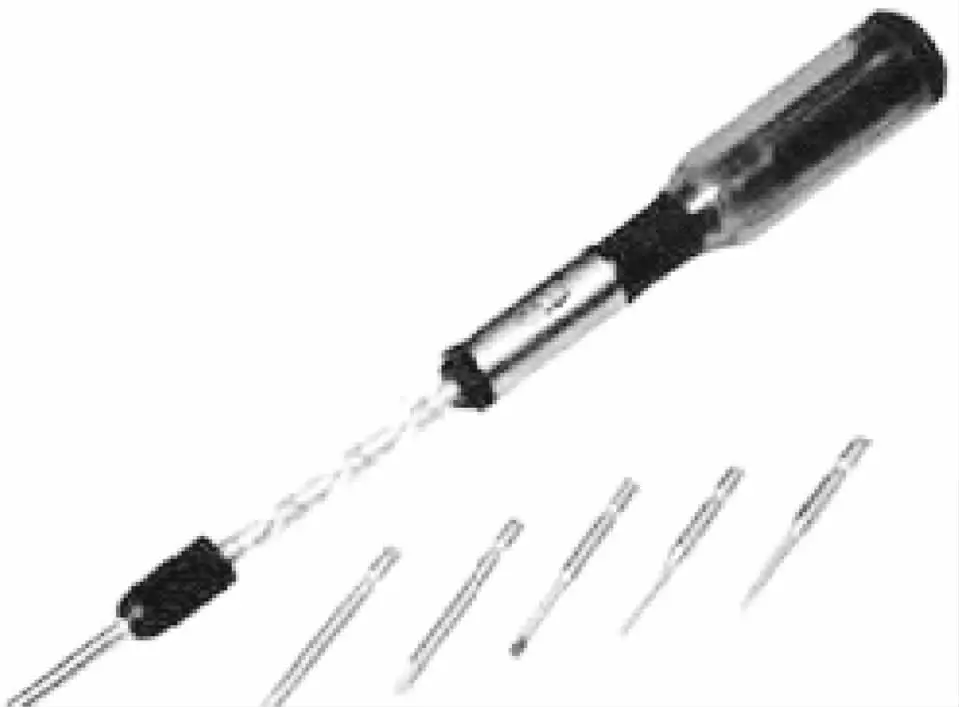
(2) Screw Tool
The screw tool, also known as a screwdriver or a reamer, as shown in Figure 18. The screw tool is a tool for tightening and removing screws, which can be divided into flat head and cross head types according to the shape of its head.
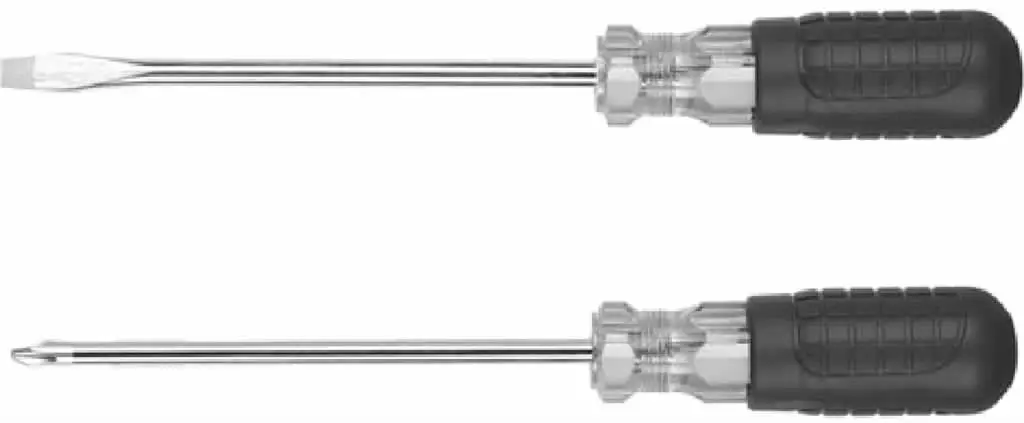
(3) Handle Clamp Screw Tool
The handle clamp screw tool, as shown in Figure 19, is used to tighten or remove flat slot screws and can be struck on the tail end, more durable than general screw tools. There are four total lengths: 150mm, 200mm, 250mm, and 300mm.

4. Hammers
(1) Assorted Hammer
The assorted hammer has five attachments: a triangular file, awl, wood chisel, flat slot screwdriver shaft, and cross slot screwdriver shaft, as shown in Figure 20. If the hammerhead is removed and replaced with an attachment, it can be used as a triangular file, awl, wood chisel, and screw tool, respectively. The total length of the handle connected to the hammerhead is 162mm.
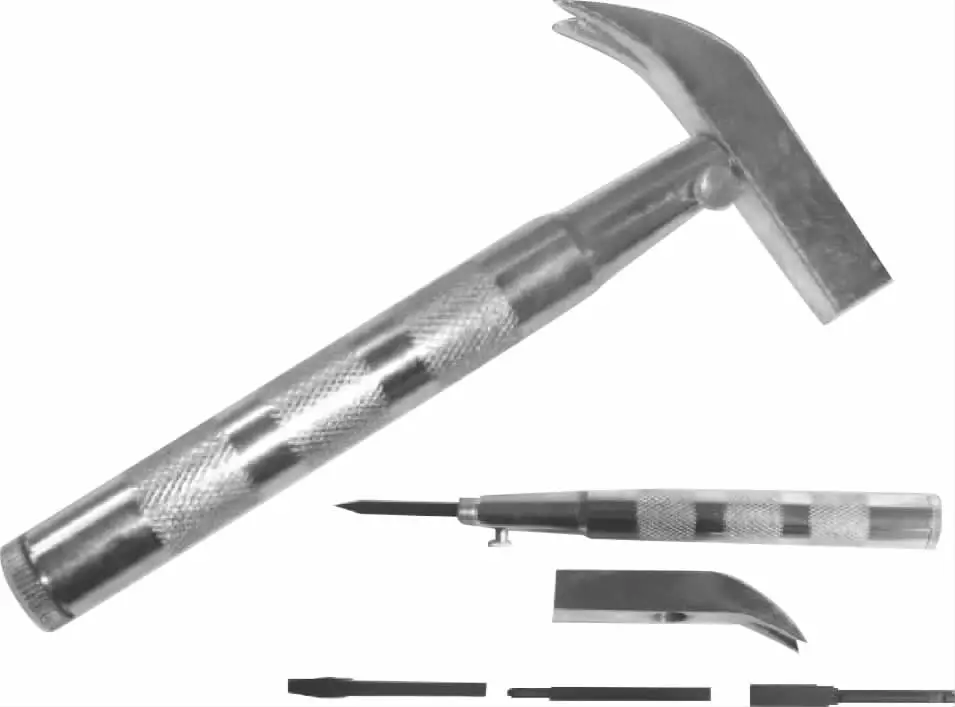
(2) Round Head Hammer
The round head hammer, as shown in Figure 21, is the most widely used hammer in cold working. One end is spherical, usually used for striking rivets; the other end is a cylindrical plane, used for general hammering. It comes in eight specifications (excluding the handle): 0.11kg, 0.22kg, 0.34kg, 0.45kg, 0.68kg, 0.91kg, 1.13kg, and 1.36kg.

(3) Chopping hammer
As shown in Figure 22, the chopping hammer is mainly used for striking uneven, thin, and wide metal workpieces to make their surface smooth. Its notch is also used to hammer the edge of leather products or to make metal parts extend longitudinally or transversely. It comes in four specifications: 0.0625kg, 0.125kg, 0.25kg, and 0.5kg.
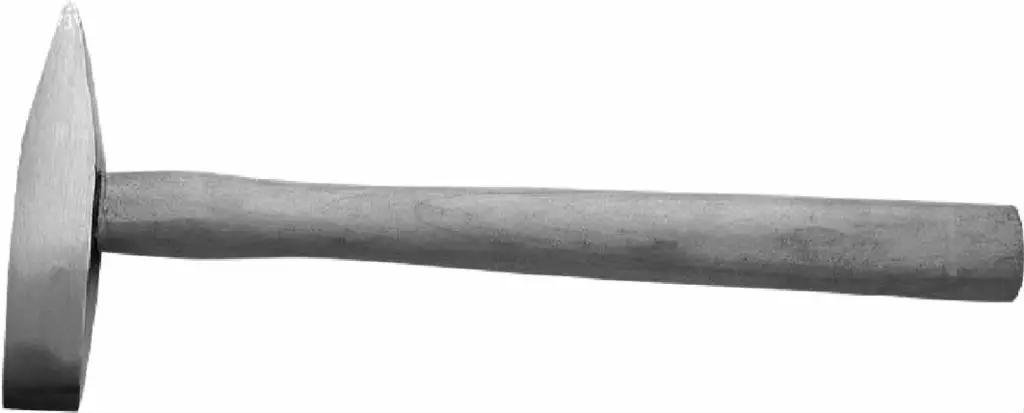
5. File
(1) Shaping file
Based on the cross-sectional shape, shaping files are divided into flat files with equal heads, flat files with pointed heads, triangular files, square files, round files, single-sided triangular files, knife-shaped files, double semi-circular files, elliptical files, flat files with round edges, and pointed flat files with round edges, as shown in Figure 23. According to the length and diameter of the file, they are divided into three major categories: 3mm×140mm, 4mm×160mm, 5mm×180mm, and the file teeth numbers are divided into 0, 1, 2, and 3, a total of 4 grades, with 0 being the coarsest and 4 being the finest.
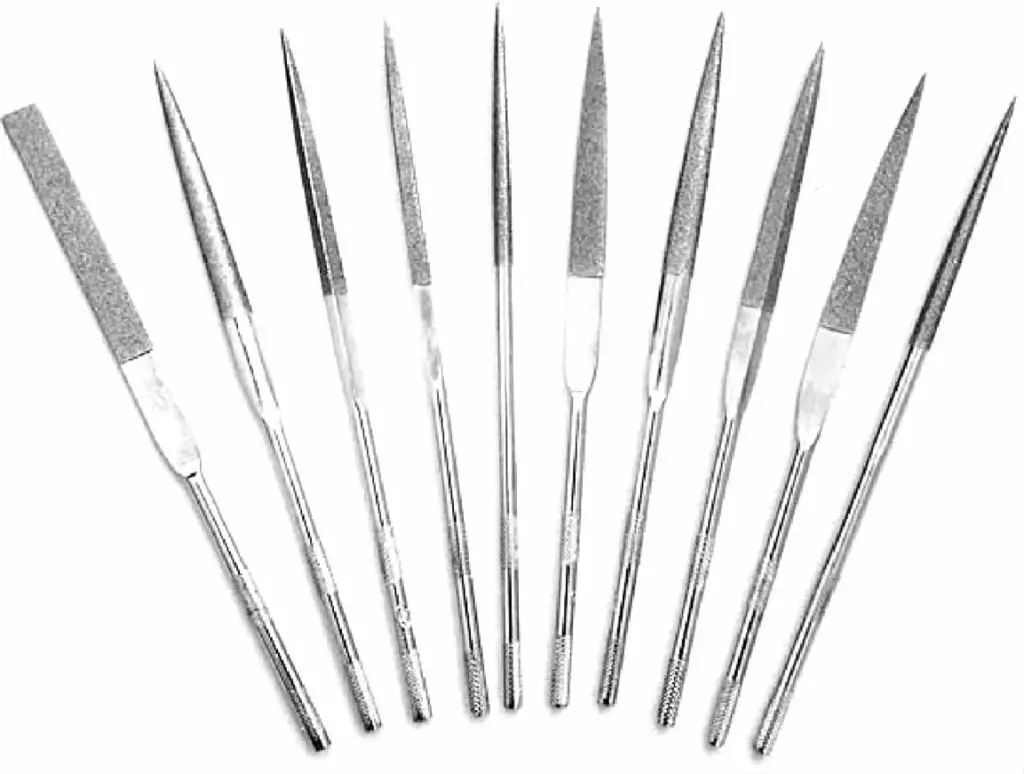
(2) Fitter’s file
As shown in Figure 24, the fitter’s file is used to file or trim the surface and holes, slots of metal workpieces, including flat files with equal heads, flat files with pointed heads, square files, triangular files, half-round files, round files, etc. According to the density of the main file teeth, the file teeth numbers are divided into 1, 2, 3, 4, 5, a total of 5 grades, with 1 being the coarsest and 5 being the finest.
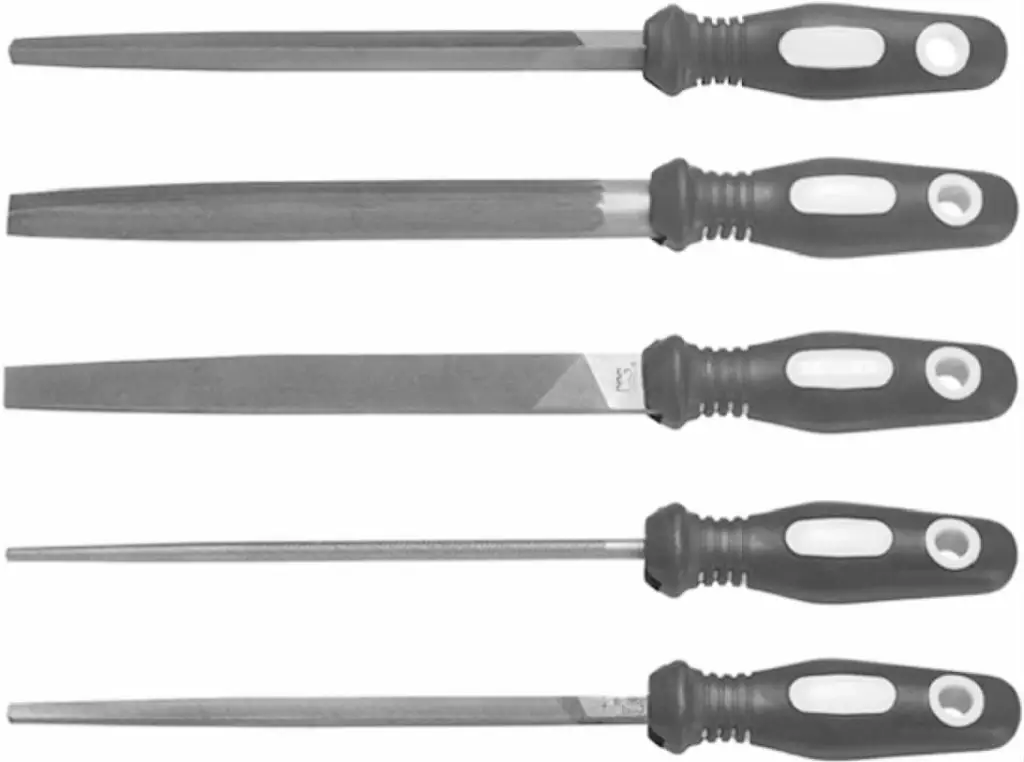
(3) Special-shaped file
As shown in Figure 25, there are knife-edge files, diamond files, flat triangle files, elliptical files, round belly files, etc. Special-shaped files are mainly used for filing special surfaces on workpieces.

6. Saw
(1) Steel saw blade
Manual steel saw blades are divided into two types according to their characteristics: all-hard (H) and flexible (F), and into five types according to the material used: carbon structural steel (D), carbon tool steel (T), alloy tool steel (M), high-speed steel (G), and bimetal composite steel (Bi), and into two types according to their form: single-sided tooth type (A) and double-sided tooth type (B).
(2) Steel saw frame
Steel saw frames are divided into adjustable (see Figure 26a) and fixed (see Figure 26b) types.
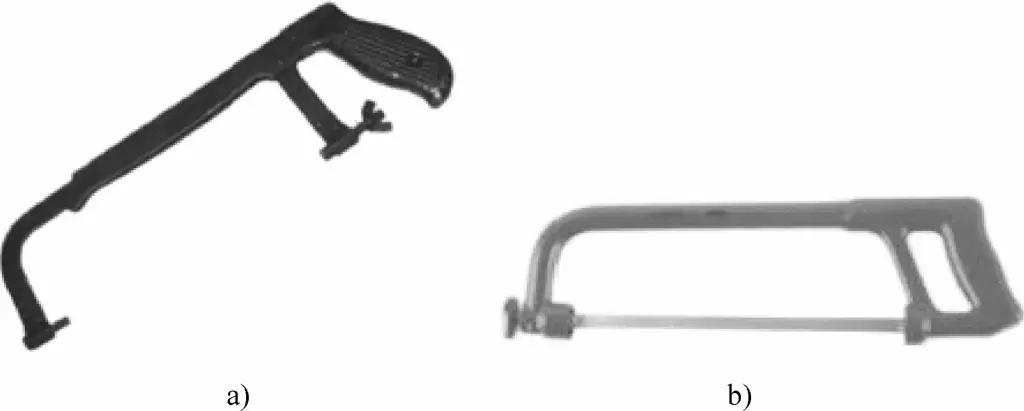
a) Adjustable
b) Fixed
7. Knife
(1) Scraper
As shown in Figure 27, the scraper is used for scraping the concave surface of bearing shells, oil grooves on workpieces, or the edges of holes. The blade length comes in specifications of 50mm, 75mm, 100mm, 125mm, 150mm, 175mm, 200mm, 250mm, 300mm, 350mm, and 400mm.

(2) Knurling tool
As shown in Figure 28, the knurling tool is used for rolling patterns on the surface of metal products. It comes in three types: single wheel, double wheel, and six wheels, with knurling wheel tooth pitches of 0.6mm, 0.8mm, 1.0mm, 1.2mm, and 1.6mm.
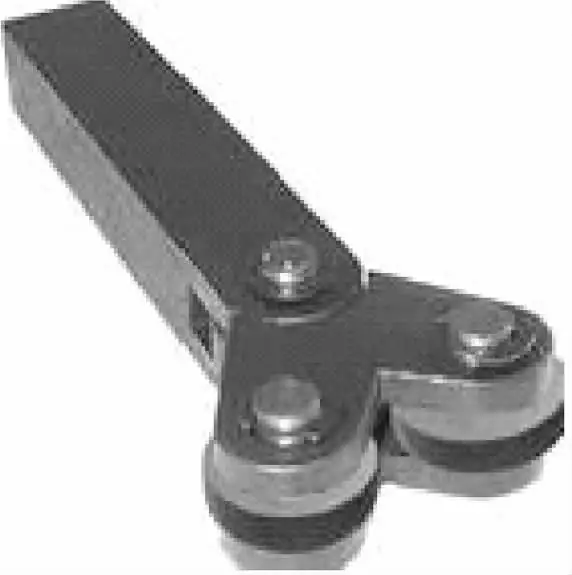
II. Common power tools
1. Electric drill
The electric drill, as shown in Figure 29, is equipped with a twist drill for drilling holes in metal parts, and is also suitable for drilling holes in wood, plastic parts, etc. The rated output power is 80~500W, and the weight of the machine alone is 1.4~5.0kg.
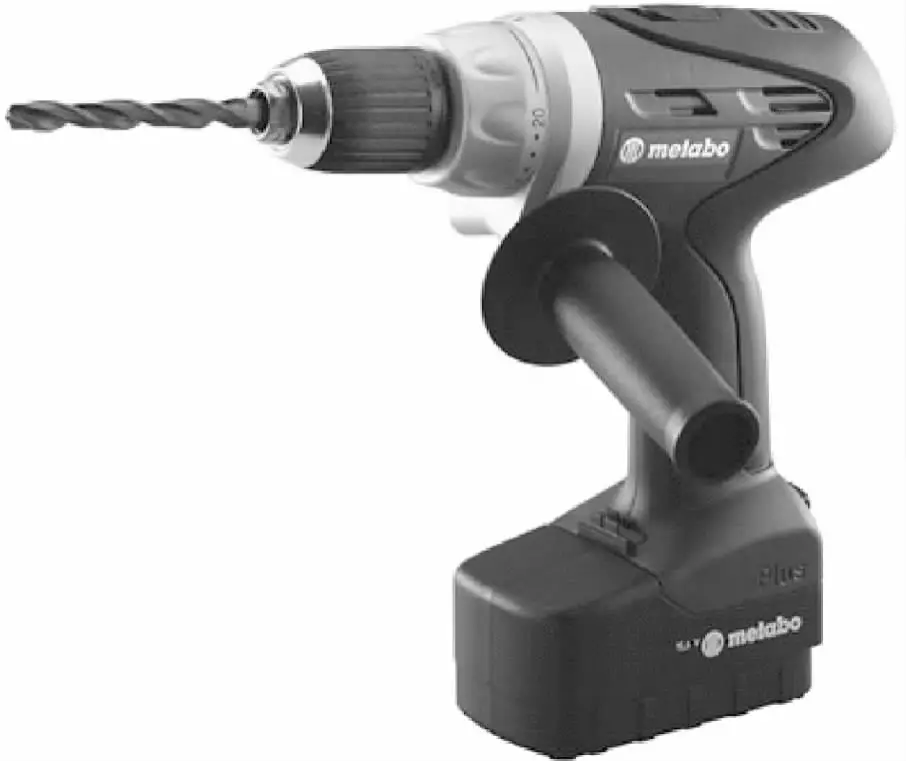
2. Electric impact wrench
The electric impact wrench, as shown in Figure 30, is equipped with a hex socket head for dismantling hex head bolts or nuts. It has various specifications from M8 to M40.
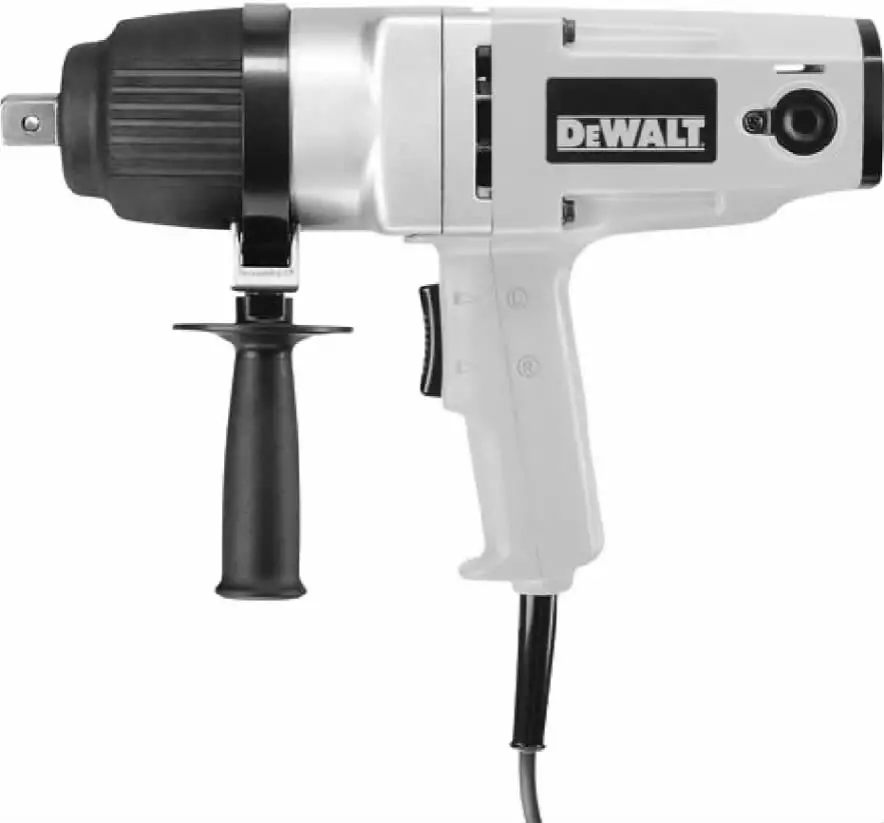
3. Electric saber saw
The electric saber saw, as shown in Figure 31, is used for sawing metal sheets, pipes, rods, and other materials. The saw blade used is saber-shaped, wider than a curve saw blade. The rated output power is 26W and 30W, with the weight of the machine alone being 3.2kg and 3.6kg.

4. Electric screwdriver
The electric screwdriver, as shown in Figure 32, is used for assembling and disassembling slotted or Phillips screws, wood screws, and self-tapping screws. The rated output power is 85W, with the weight of the machine alone being 2.0kg.
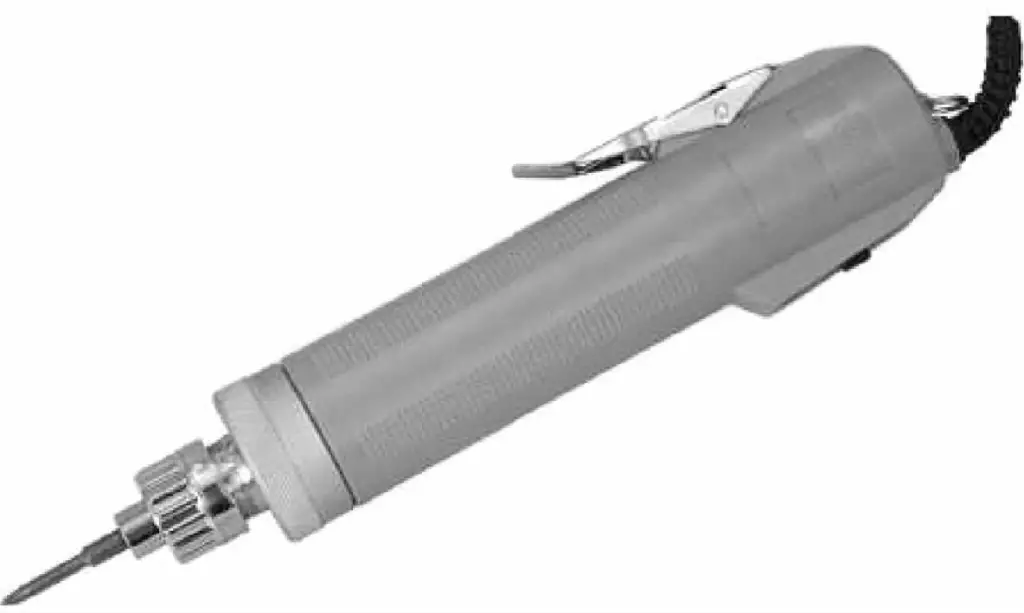
5. Electric self-tapping screwdriver
The electric self-tapping screwdriver, as shown in Figure 33, is used for dismantling Phillips self-tapping screws, equipped with a screw driving depth adjustment device and an automatic positioning device. The rated output power is 140W and 200W, with the weight of the machine alone being 1.8kg.
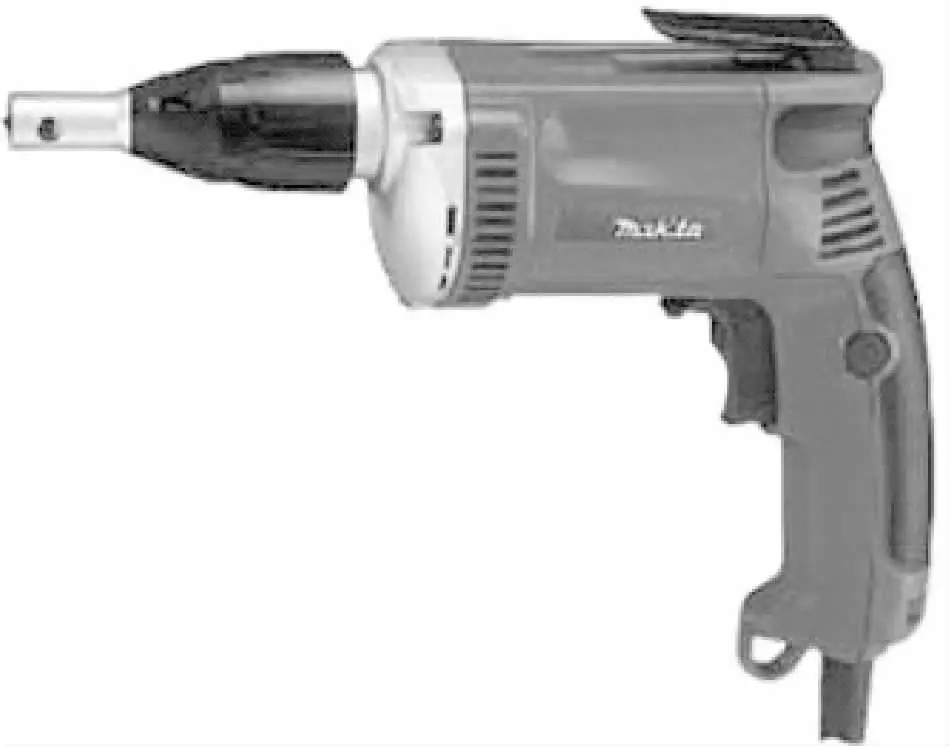
6. Electric punch shear
The electric punch shear, as shown in Figure 34, uses the punching of the upper and lower punch heads to punch metal sheets and plastic sheets, laminated cloth boards, fiberboards, etc., especially suitable for punching internal holes of various geometric shapes, ensuring that the sheet does not deform after punching. The rated output power is 230W, 370W, 430W, and 650W, with the weight of the machine alone being 2.2kg, 2.5kg, 4.0kg, and 5.5kg.
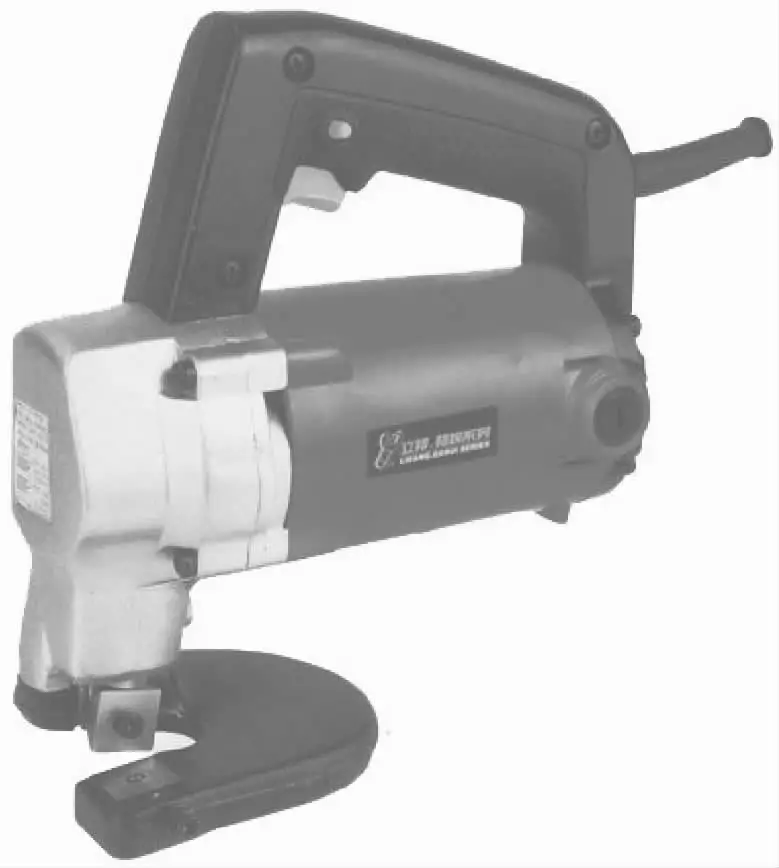
III. Common pneumatic tools
1. Air gun
(1) Pneumatic dust blowing gun
The pneumatic dust blowing gun, as shown in Figure 35, is used for removing dirt or chips inside the part cavity and on the general internal and external surfaces. The working air pressure is 0.2~0.49N/mm², with a weight of 0.15~0.19kg.
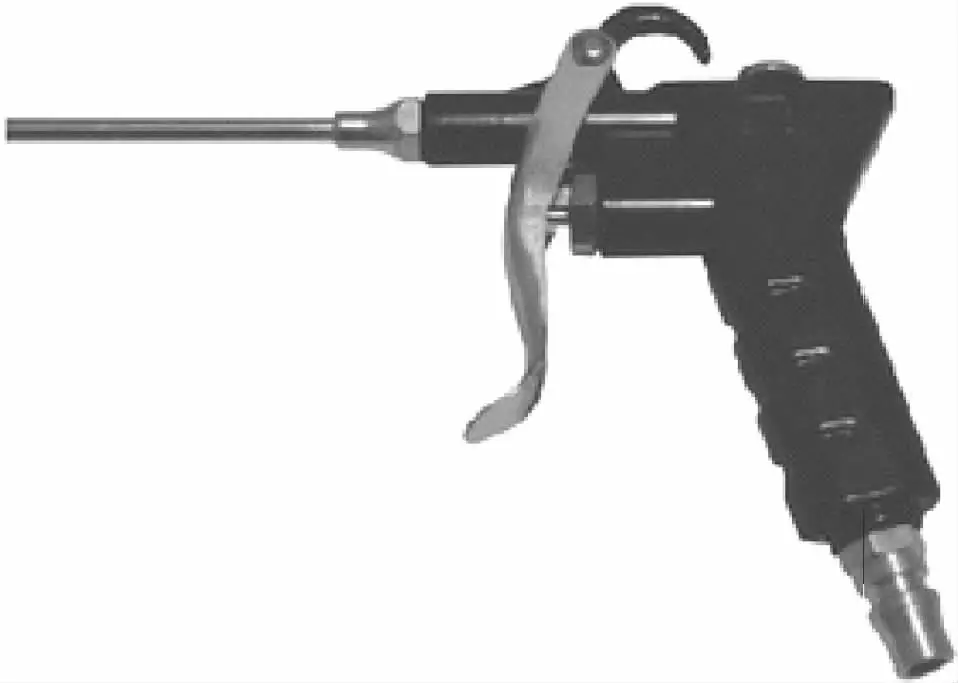
(2) Pneumatic rivet gun
The pneumatic rivet gun, as shown in Figure 36, is used for single-sided riveting of core-pulling rivets on structural components. The working air pressure is 0.63N/mm², suitable for core-pulling rivets with a diameter of 2.4~5mm, with a weight of 2.25kg.
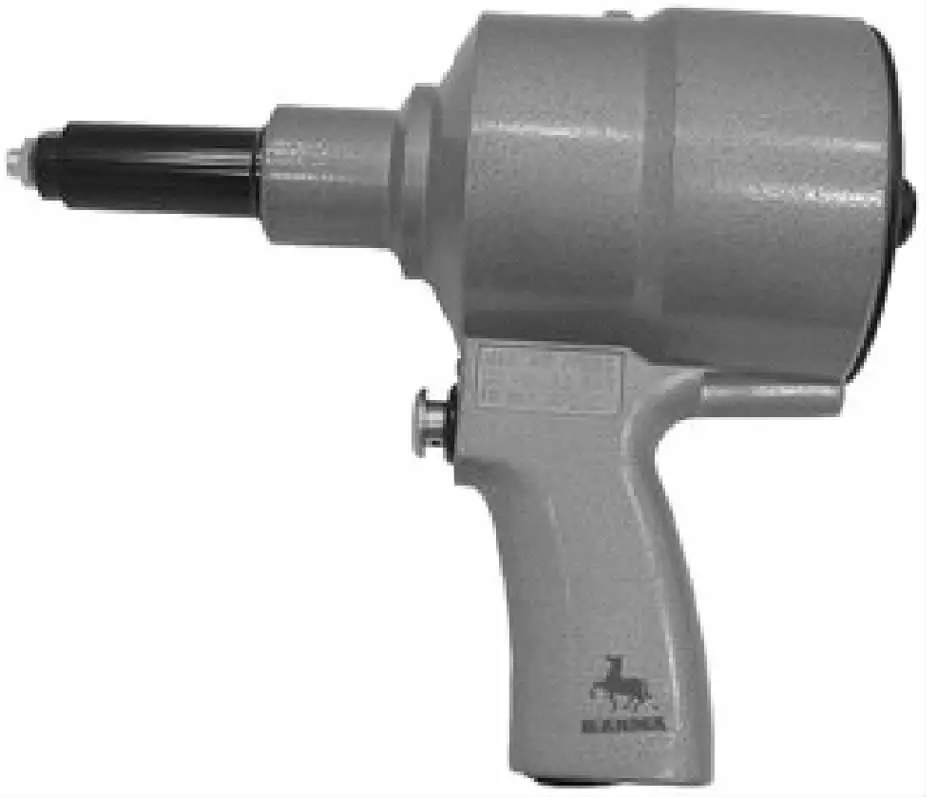
(3) Pneumatic sandblasting gun
The pneumatic sandblasting gun, as shown in Figure 37, is used for spraying quartz sand for the pretreatment of workpiece surface purification or roughening before painting or welding. The working air pressure is 0.63N/mm², with a weight of 1.0kg.
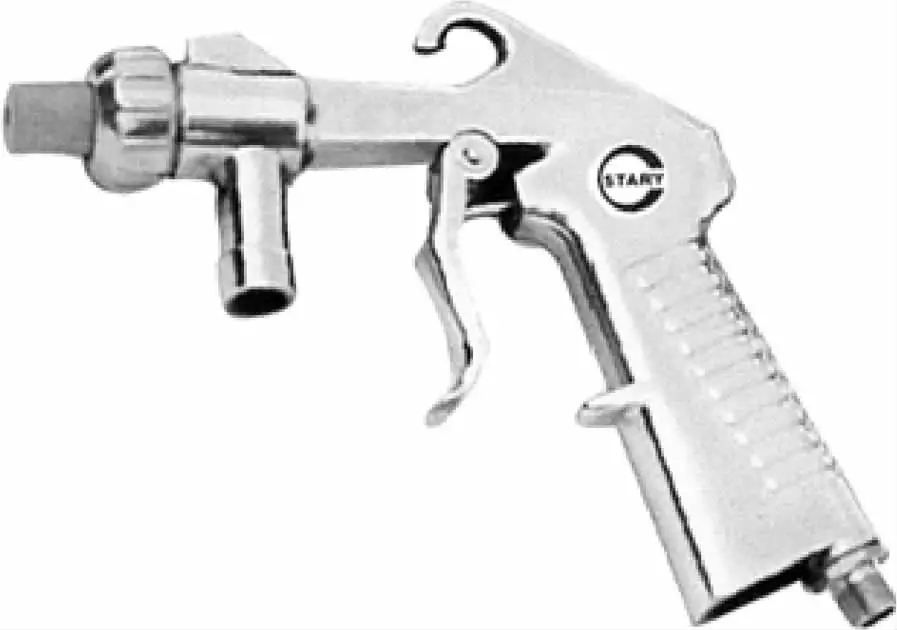
(4) Pneumatic washing gun
The pneumatic washing gun, as shown in Figure 38, is used for spraying water and detergent at a certain pressure to clean various dirt on the surface of objects. The working air pressure is 0.3~0.5N/mm², with a weight of 0.56kg.
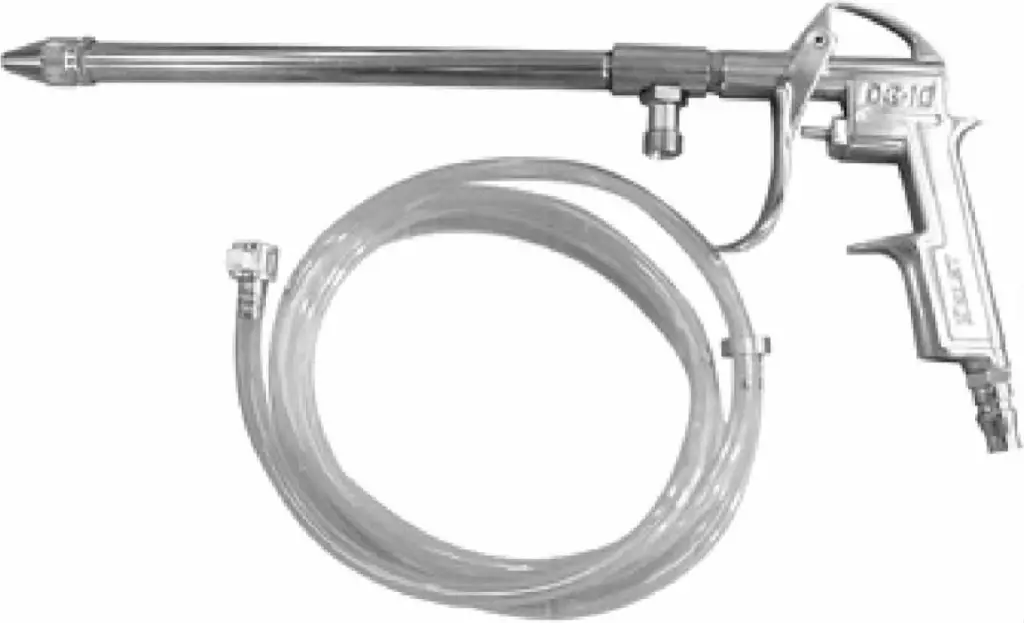
2. Pneumatic Grinding Tools
(1) Straight Handle Pneumatic Grinding Wheel Machine
The straight handle pneumatic grinding wheel machine, as shown in Figure 39, is equipped with a grinding wheel for grinding the risers of castings, large parts, molds, and welds. For example, equipped with a cloth grinding wheel, it can be used for polishing; equipped with a wire wheel, it can remove metal surface rust and old paint layers. The working pressure is 0.63N/mm², and the weight of the single machine has six specifications: 1.0kg, 1.2kg, 2.1kg, 3.0kg, 4.2kg, and 6.0kg.

(2) Vertical End Face Pneumatic Grinding Wheel Machine
The vertical end face pneumatic grinding wheel machine, as shown in Figure 40, has the fiber-reinforced cup-shaped grinding wheel directly installed at the front end of the rotor shaft of the pneumatic engine, suitable for grinding welding bevels, welds, and other metal surfaces, cutting metal sheets and small steel. The working pressure is 0.63N/mm², and the weight of the single machine is 2.0kg.
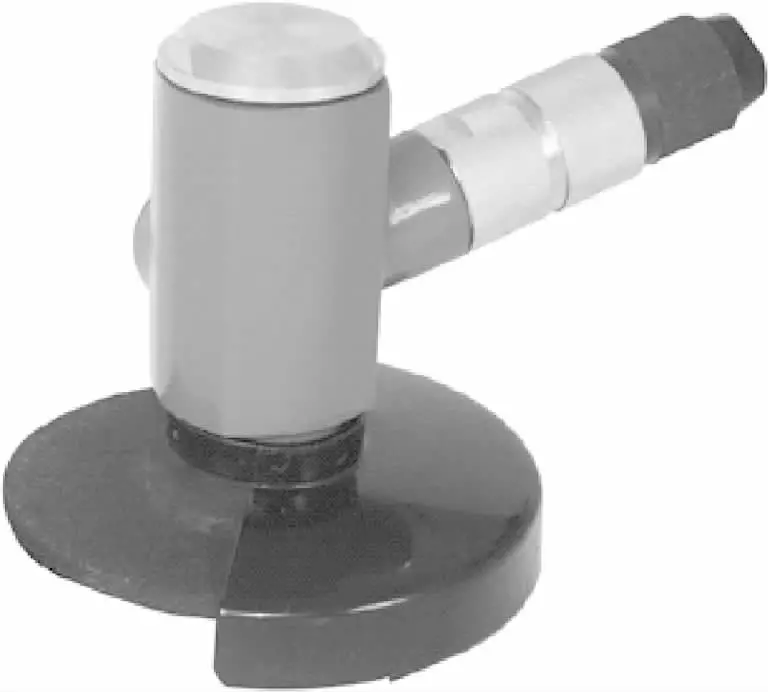
3. Pneumatic Cutting Tools
(1) Pneumatic Shears
Pneumatic shears, as shown in Figure 41, are used for shearing metal plates and plastic boards, cloth laminates, fiberboards, etc., ensuring no deformation after shearing. The working pressure is 0.63N/mm², and the weight of the single machine is 2.8kg.
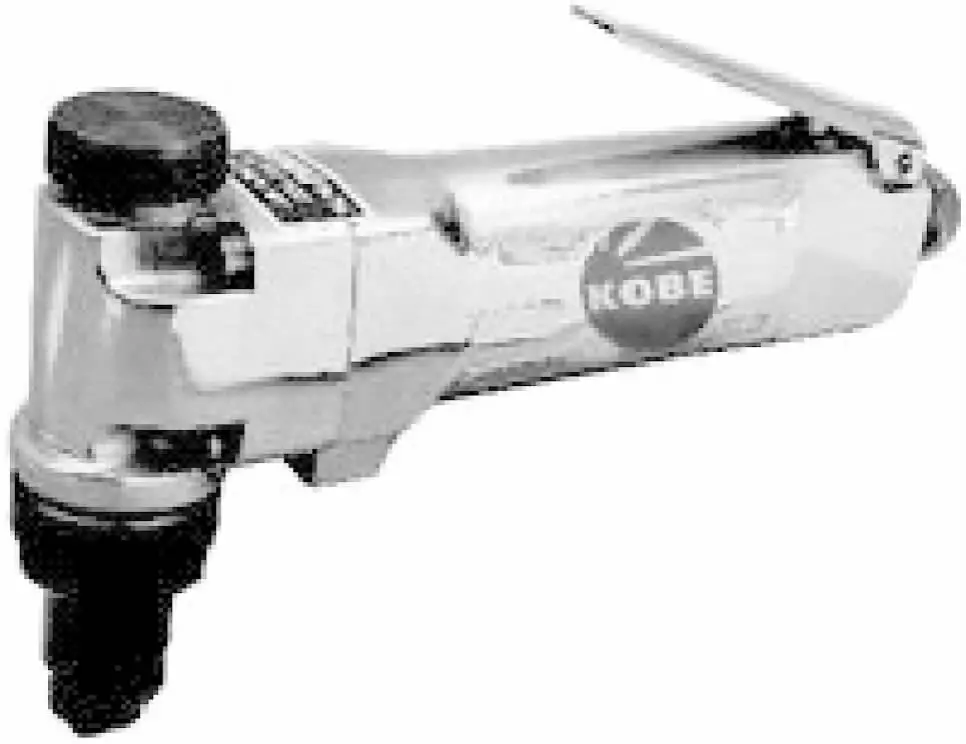
(2) Pneumatic Scissors
Pneumatic scissors, as shown in Figure 42, are used for straight or curved cutting of metal plates. The working pressure is 0.63N/mm², and the weight of the single machine is 1.6kg.
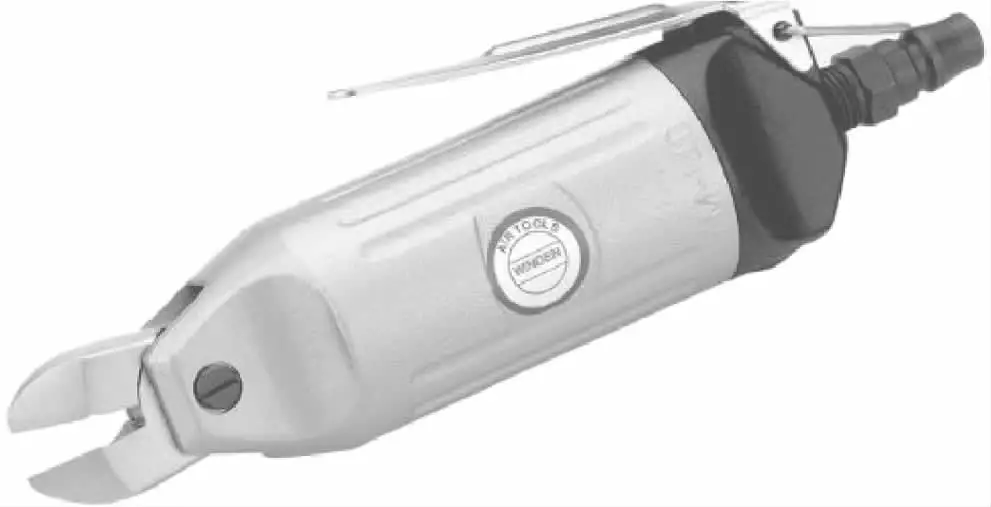
(3) Pneumatic Tapping Machine
The pneumatic tapping machine, as shown in Figure 43, is used for tapping internal threaded holes in workpieces. The tapping specifications are M6~M10, and the weight of the single machine is 1.2~1.7kg.
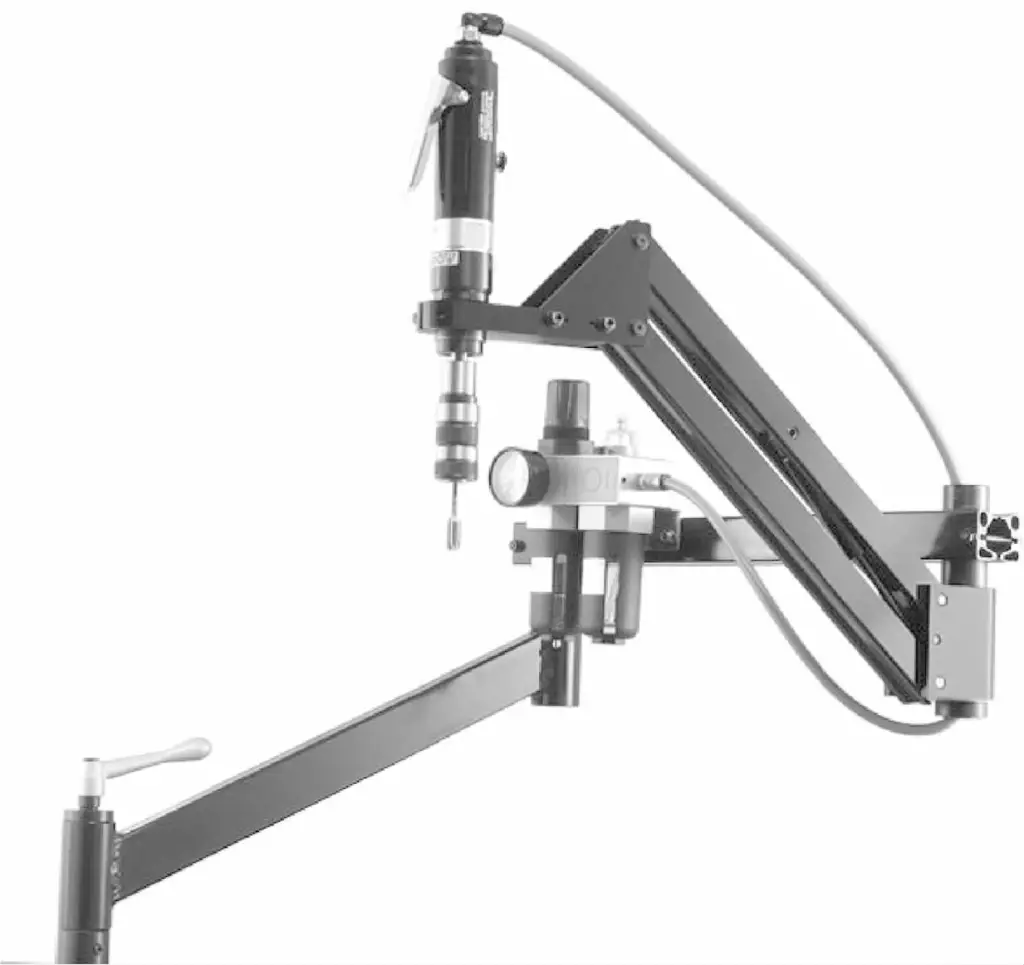
(4) Pneumatic Pipe Beveling Machine
The pneumatic pipe beveling machine, also known as a steel pipe chamfering machine, as shown in Figure 44, is used for trimming the ends of metal pipes and machining bevels for welding. The outer diameter of the beveled pipe is 11~630mm, and the weight of the single machine is 2.7~5.5kg.
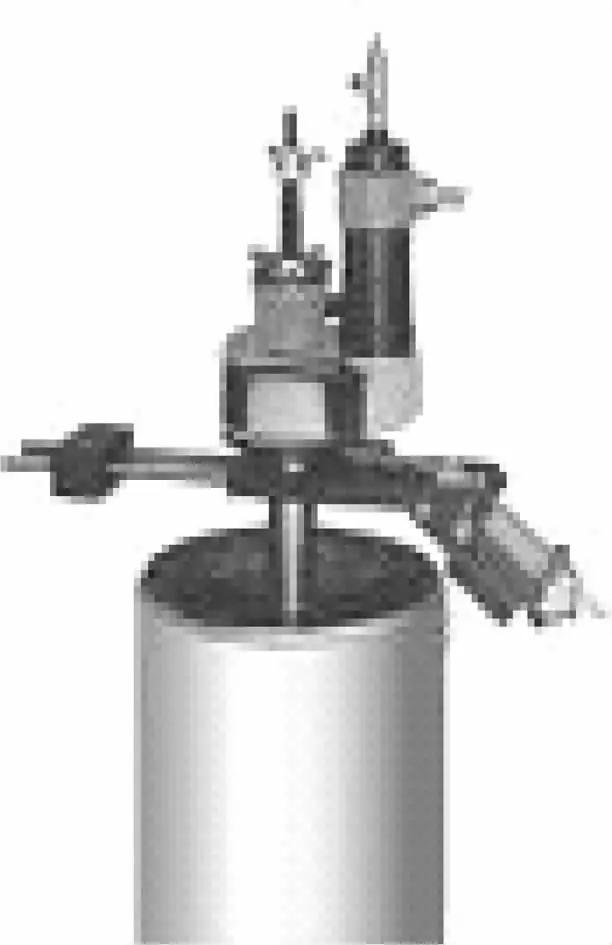
(5) Pneumatic Handheld Cutting Machine
The pneumatic handheld cutting machine, as shown in Figure 45, is suitable for cutting materials such as metal, plastic, wood, fiberglass, and ceramic tiles. The saw blade specification size is φ50mm, and the weight of the single machine is 1.0kg.
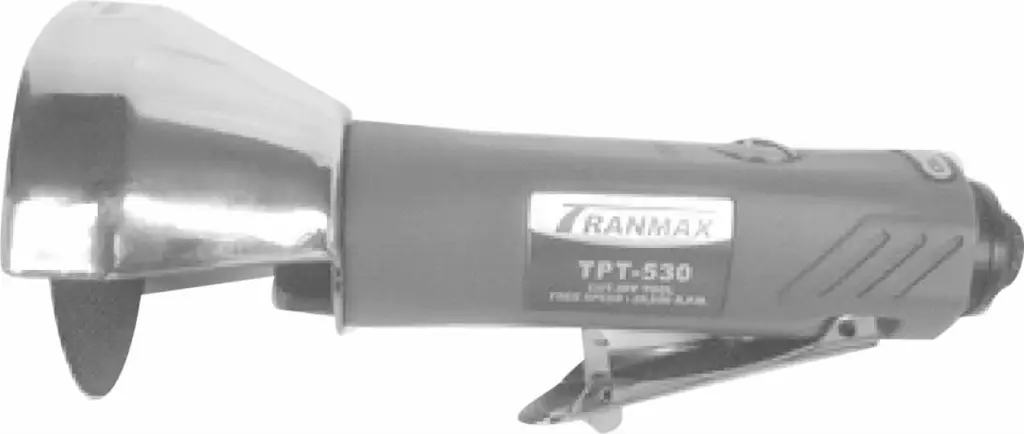
(6) Pneumatic Reciprocating Cutting Machine
The pneumatic reciprocating cutting machine, as shown in Figure 46, is used for cutting rubber materials with a thickness of less than 50mm. The weight of the single machine is 3.2kg.
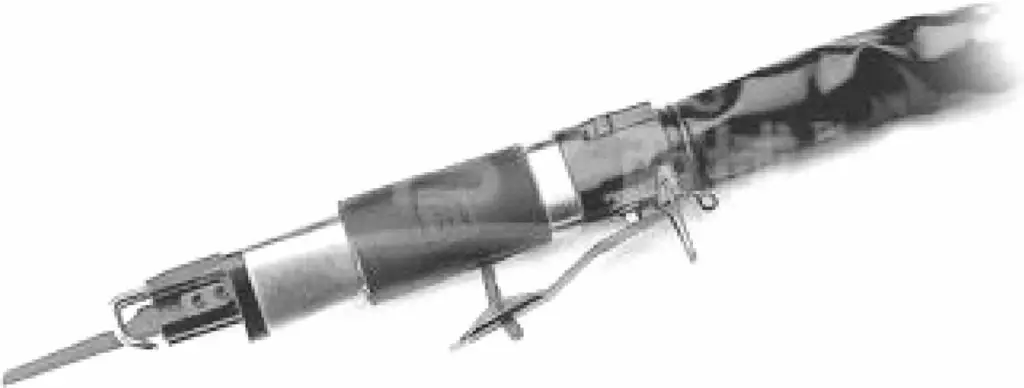
(7) Pneumatic Milling
Pneumatic milling, as shown in Figure 47, is equipped with various shapes of special grinding wheel heads for grinding, suitable for shaping and polishing various molds, grinding welds, cleaning burrs, and can also be equipped with rotary files for high-speed milling. The working head diameter is 8~50mm, and the weight of the single machine is 0.28~1.2kg.
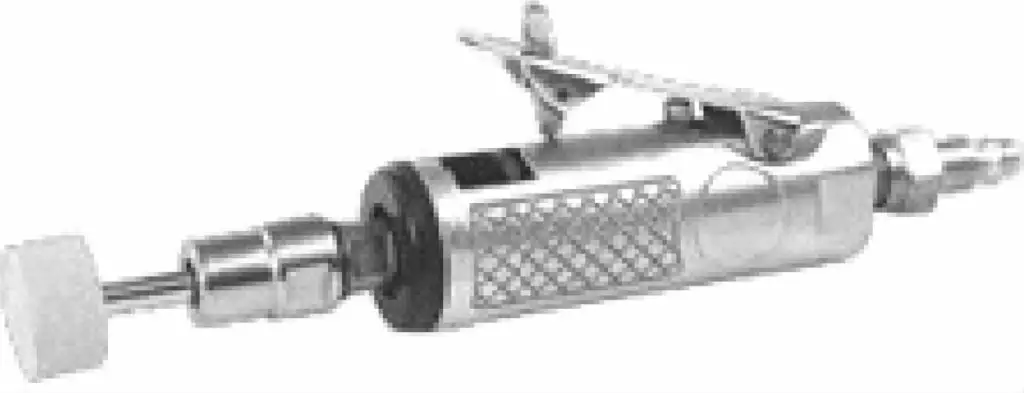
(8) Air drill
As shown in Figure 48, the air drill is equipped with a drill bit and is used for drilling holes in workpieces made of metal materials, wood, and plastics. The working air pressure is 0.63N/mm², and the weight of the machine alone ranges from 0.9 to 3.5kg.
